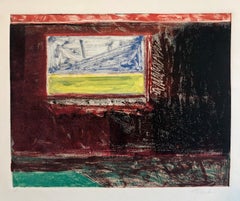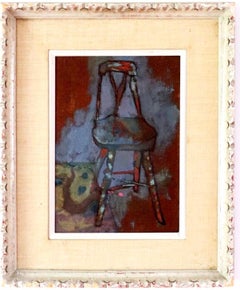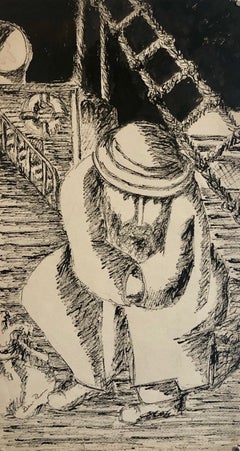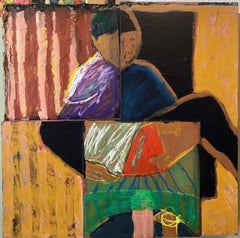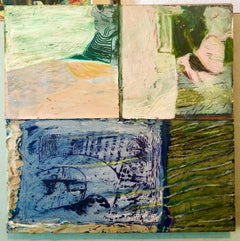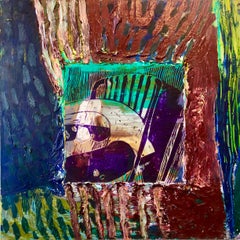Lions Gallery Paintings
1990s Contemporary Abstract Prints
Monoprint, Monotype
20th Century Modern Interior Paintings
Oil, Board
1940s American Modern Figurative Paintings
Watercolor, Gouache
1990s Post-Modern Abstract Paintings
Masonite, Paper, Mixed Media, Oil
1980s Post-Modern Abstract Paintings
Masonite, Paper, Mixed Media, Oil
1980s Post-Modern Abstract Paintings
Masonite, Paper, Mixed Media, Oil
1980s Post-Modern Figurative Paintings
Lithograph
1980s Post-Modern Figurative Paintings
Lithograph
1980s Post-Modern Figurative Paintings
Lithograph
1970s Abstract Expressionist Mixed Media
Wool
20th Century Outsider Art Portrait Paintings
Gouache
20th Century Outsider Art Portrait Paintings
Gouache
20th Century Outsider Art Portrait Paintings
Gouache
20th Century Outsider Art Portrait Paintings
Gouache
20th Century Outsider Art Portrait Paintings
Gouache
20th Century Outsider Art Portrait Paintings
Gouache
20th Century Outsider Art Portrait Paintings
Gouache
1960s Interior Paintings
Oil
1960s Interior Paintings
Oil
1990s Abstract Abstract Paintings
Canvas, Acrylic, Panel
1990s Pop Art Abstract Paintings
Canvas, Oil, Alkyd
20th Century Landscape Paintings
Canvas, Oil
1970s Modern Still-life Paintings
Canvas, Oil, Acrylic
1940s Realist Portrait Paintings
Canvas, Oil
1980s Contemporary Figurative Paintings
Oil Pastel, Mixed Media, Pigment
1960s Abstract Expressionist Interior Paintings
Canvas, Oil
1950s Surrealist Figurative Paintings
Oil, Board
1980s Abstract Expressionist Abstract Paintings
Acrylic, Archival Paper
1980s American Modern Mixed Media
Mixed Media
20th Century Modern Mixed Media
Mixed Media
Mid-20th Century Modern Nude Paintings
Watercolor, Gouache
Mid-20th Century Modern Nude Paintings
Watercolor, Gouache
20th Century Impressionist Figurative Paintings
Canvas, Oil
Mid-20th Century Folk Art Mixed Media
Glass, Mixed Media, Mosaic, Board
1980s Modern Landscape Paintings
Canvas, Oil, Illustration Board
Early 20th Century Modern Figurative Paintings
Paper, Charcoal, Pastel, Watercolor, Gouache
1980s Abstract Expressionist Abstract Paintings
Acrylic, Archival Paper
Mid-20th Century Modern Figurative Paintings
Paper, Gouache
1990s American Modern Mixed Media
Paper, Pastel, Graphite
1990s American Modern Mixed Media
Paper, Pastel, Graphite
1970s Arte Povera Abstract Paintings
Paint, Mixed Media, Laid Paper
1970s Arte Povera Abstract Paintings
Paint, Mixed Media, Laid Paper
1970s Abstract Expressionist Abstract Paintings
Paint, Mixed Media, Laid Paper
1970s Abstract Expressionist Abstract Paintings
Paint, Mixed Media, Laid Paper
1970s Hard-Edge Abstract Paintings
Wood, Plywood, Paint, Acrylic
1980s Abstract Expressionist Abstract Paintings
Handmade Paper, Lithograph, Screen
Mid-20th Century Folk Art Figurative Paintings
Canvas, Oil
20th Century Modern Abstract Paintings
Paper, Pastel
20th Century Modern Abstract Paintings
Paper, Pastel
20th Century Modern Abstract Paintings
Paper, Pastel
20th Century Modern Abstract Paintings
Paper, Oil
20th Century Modern Abstract Paintings
Paper, Oil
20th Century Modern Abstract Paintings
Paper, Oil
1970s Surrealist Figurative Paintings
Gouache
Early 20th Century Expressionist Figurative Drawings and Watercolors
Paper, Ink
20th Century Post-Modern Animal Paintings
Paper, Mixed Media
Mid-20th Century Surrealist Figurative Paintings
Canvas, Oil
20th Century Modern Abstract Paintings
Paper, Gouache
20th Century Modern Abstract Paintings
Paper, Gouache
1970s Contemporary Abstract Drawings and Watercolors
Paper, Oil Crayon, Oil Pastel
